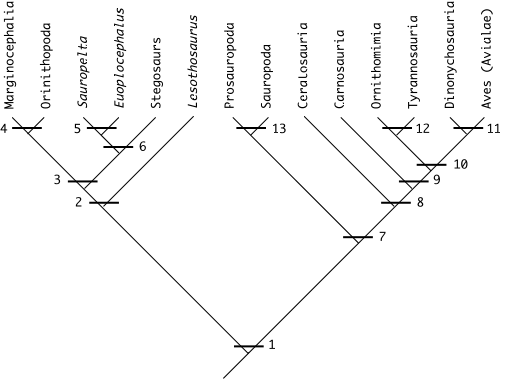
This is a compulsory exercise! The dinosaur halls of the American
Museum of Natural history are located on the 4th floor; you will have to
pay admission to the museum (unless you are a member). Note:
Lab students do only Part 3.
Note: Please read the directions on the web to the American
Museum of Natural History.
There is an $7.50 "suggested" admission price for students with
ID and the AMNH's hours are 10:00am to 5:45 PM every day.
Note that the best times to visit the Museum are the first couple of horus in the Morning, especially on Weekends. However, try to avoid those days when schools vist. The noise level is unbeilevable! Call (212) 769-5606 to find which days those are.
Also, remember to take your class notes and the text with you. This excercise should take several hours, so budget you time accordingly.
Once you reach the Museum, get a floorplan, and follow the following instructions:
The purpose of this exercise is to get a feel for the different dinosaur groups.
The write-up should consist of: your notes from Part 1, the answers
to the questions (Part 2 and 3), and your drawings from Part 2. The written
parts should be typed. Drawings should be done in pencil, and have scales
and labels. The write-up is due by the last day of class:
Monday, April 30, 2001.
Part 1 - Movie on life and cladistics:
Go to the Orientation Center, between the Mammal and Vertebrate Origins
halls on the 4th floor. Watch the movie, taking notes on the shared derived
characters for the different animal groups (not just the dinosaurs).
Part 2 - The Halls of the Dinosaurs:
Go to the 4th Floor. Below is a cladogram of dinosaurs provided as the core of this exercise. Note also that there are cladograms sprinkled around the exhibits. Use these to help guide you. Using this cladogram, answer the following questions:

| Characters: | 7. | SAURISCHIA: TWISTED DIGIT I (GRASPING HAND) | |
| 1. | DINOSAURIA: PERFORATE ACETABULUM | 8. | THEROPODA: FUNCTIONALLY THREE-TOED FOOT |
| 2. | ORNITHISCHIA: BACKWARD-POINTING PUBIS | 9. | TETANURA: THREE-TOED MANUS |
| 3. | GENASAURIA: INSET TOOTH ROW (CHEEKS) | 10. | COELUROSAURIA: RELATIVELY LONG ARMS |
| 4. | CERAPODA: UNEVEN COVERING OF ENAMEL | 11. | MANIRAPTORA: SEMILUNATE CARPAL |
| 5. | ANKYLOSAURIA: BACK COVERED WITH ARMOR PLATES | 12. | ARCTOMETATARSALIA: PROXIMALLY PINCHED METATASAL III |
| 6. | THYREOPHORA: BONY PLATES AND/OR SPIKES IMBEDDED IN SKIN | 13. | SAUROPODAMORPHA: SMALL HEAD AND LONG NECK |
Early Birds
(Go to the Barosaurus & Allosaurus mounts in the Roosevelt
Rotunda, on Floor 2)